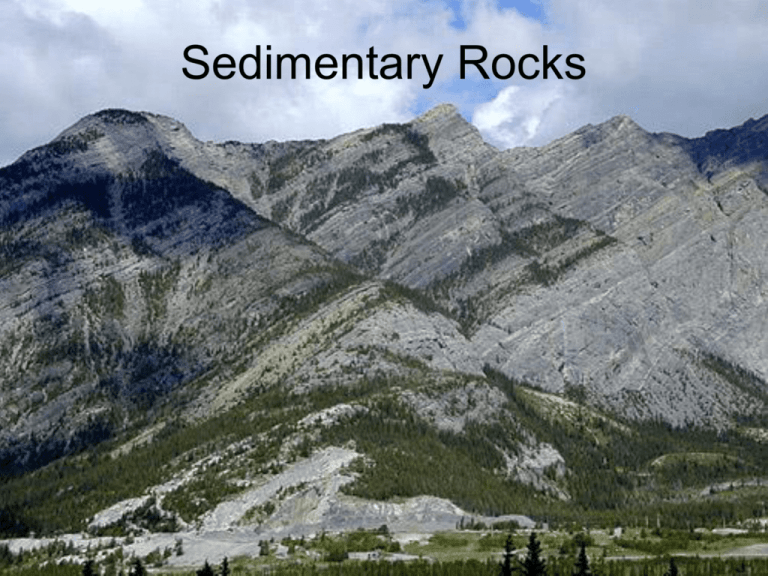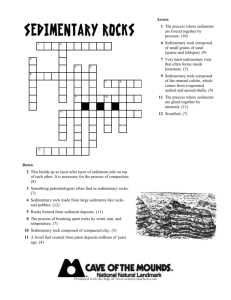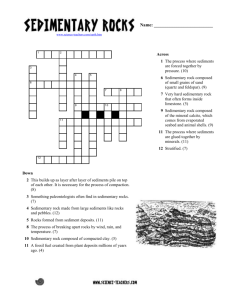Sedimentary Rocks Block C
advertisement

Sedimentary Rocks 1) Formation of Sedimentary Rocks- •Sediments- loose materials such as rock fragments, mineral grains, and bits of shell that have been moved by wind, water, ice, or gravity. •Sedimentary rocks form when sediments are pressed and cemented together. A. Stacked rocks• Sedimentary rocks are often formed in layers. •The older layers are on the bottom because they were deposited first. 2) Classifying Sedimentary Rocks•Sedimentary rocks are usually classified as Detrital, Chemical, or Organic. 3) Detrital Sedimentary Rocks•Detrital- to wear away. A. Weathering- The process that breaks rocks into smaller pieces. B. Erosion- When a rock is exposed to air, water, or ice, it is unstable and breaks down chemically or mechanically. C. Compaction- When sediments build up in layers and pressure is added to those layers, they are pushed and compacted to form solid rock. D. Cementation occurs when water soaks through soil and rock. E. Shape and size of sediments•Detrital rocks are named according to the shape and sizes of the sediments that form them. •If the sediments are rounded, the rock is called conglomerate. •If the sediments have shape angles, the rock is called breccia. 4) Chemical Sedimentary Rocks- •Chemical sedimentary rocks form when dissolved minerals come out of solution. •Examples- Limestone and Rock Salt. 5) Organic Sedimentary RocksA. Rocks made from the remains of once living things. •Examples- Chalk and Coal.








